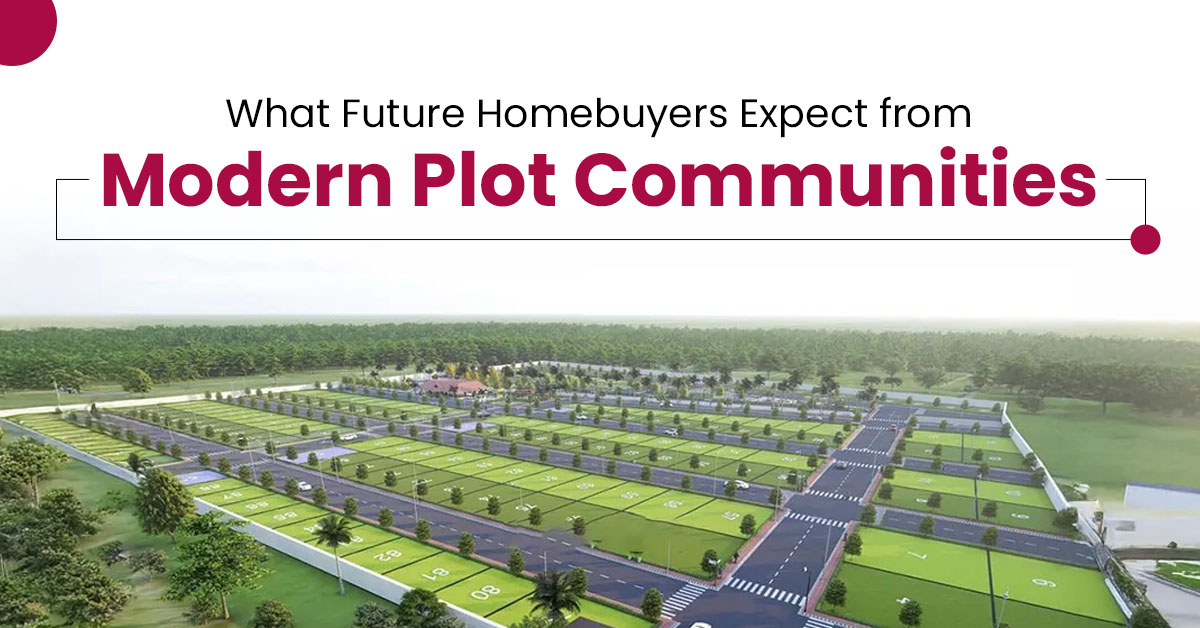
What Future Homebuyers Expect from Modern Plot Communities
People who buy land today think very differently from earlier generations. The focus has moved from plot size to how that land fits within a functioning neighbourhood. Many buyers have realised that the real benefits of living in communities appear over time: cleaner surroundings, better upkeep, and a sense of safety that isolated plots rarely provide. Those exploring land in Poonamalleeoften ask about drainage lines, approach roads, and nearby schools before they even check prices. It shows how priorities have shifted.
A well-planned layout is now seen as a foundation for stability, not an optional feature. Buyers want to know whether the land will hold its value, and whether the area will develop in an organised way. For them, ownership is no longer just legal; it is about belonging to a space that can actually support daily life.
Integrated Layout Design and Smart Land Use
People looking for residential plots today talk less about plot size and more about how the space connects with its surroundings. They want layouts that feel organised with proper road width, marked boundaries, and space set aside for common use. In most gated community plots, attention now goes to how water drains, how traffic flows, and how open areas balance construction. Buyers also check the slope of the land and how future houses will align with light and airflow. When engineers and planners shape projects together, the result is a layout that holds value and function through changing city conditions.
Transparent Documentation and Plot Layout Approval
People buying home plots today don’t sign until they’ve checked what stands behind the offer. They ask for layout approvals, parent documents, and FMB sketches, not afterthoughts, but before payment. Most of them have learned that clean paperwork is worth more than an extra square foot. Developers who share details early make the process easier and faster for everyone. The benefits of living in communities also begin here; when each owner knows the land is approved and recorded properly, disputes rarely arise later. A project built on open documentation holds its value, even years after the last plot is sold.
Sustainability and Green Infrastructure
People exploring residential plots today often ask about water flow and green cover before they ask about road width. They know that comfort depends on how the land handles heat, rain, and waste over time. In well-planned gated community plots, open areas, stormwater drains, and tree lines are treated as core parts of the design, not decoration. Builders who use permeable blocks, set up recharge pits, and protect existing soil layers end up with layouts that stay usable through all seasons. Such planning keeps the ground firm, reduces standing water, and helps the area stay cooler even during long dry spells. For most buyers, that balance of planning and restraint shows the difference between a short-term layout and one meant to last.
Security and Gated Community Planning
Families who invest in home plots today treat safety as part of daily convenience, not an added feature. They look for layouts that stay orderly on their own gates that close properly, lights that work, and guards who actually show up. In planned communities, people tend to look out for each other, and upkeep becomes easier when rules are clear. It’s the quiet coordination that keeps the place running well after handover. When a developer sets that structure early, the layout doesn’t fall apart later; it grows into a lived-in, dependable space.
Ready Infrastructure and Utility Access
Buyers looking for residential plots today ask one thing early: what is already built and working on the site. Roads, streetlights, and drains that actually connect to the main line give confidence that the layout is functional, not experimental. In most gated community plots, people expect to see underground utilities, water points, and access to reliable electricity before payment. Internet connectivity, stormwater outlets, and waste lines now count as standard, not upgrades. When these systems are complete or clearly scheduled, the land’s value becomes visible right away. It shows that the developer thought through day-to-day use, not just sales numbers. A plot surrounded by working infrastructure feels ready to live in, not something waiting for the city to catch up.
Accessibility and Regional Connectivity
When people look at home plots, they start by checking how easily they can get in and out of the area. A wide approach road, a steady bus route, or a metro stop nearby often matters more than the price tag. Around South Chennai, buyers talk about IT corridors and link roads the way older generations once spoke about landmarks. Access changes everything. Schools, small shops, and even weekend routines depend on it. The benefits of living in communities also show here; when roads are shared and maintained together, movement stays predictable, and services arrive on time. A plot that connects to daily life grows in value naturally, while one hidden away tends to stay idle, no matter how good the layout looks.
Community Planning and Lifestyle Value
When people visit a site for residential plots, they imagine how daily life will feel once the houses come up. Spaces for walking, a park corner, or even a shaded sitting area change how a layout is perceived. In most gated community plots, buyers expect a few shared areas where families can meet or children can play safely. These aren’t luxuries; they make the place feel alive. Developers who reserve small pockets for common use end up with projects that stay active and well-kept. A layout designed this way attracts end-users rather than short-term investors, which keeps the community steady over time.
Digital Support and Customer Engagement
People interested in residential plots now expect more than printed brochures. They ask for digital layout plans, video walkthroughs, and scanned approvals before they decide to visit the site. Most enquiries for home plots move forward only when the communication feels active, a quick reply, a short update, or a call returned on time. Buyers like to see proof that work is moving, whether that’s a photo of levelling or a copy of a new approval. These small signals make a big difference. It’s less about convenience and more about trust; they want to know someone is actually paying attention on the other end.
Long-Term Maintenance and Value Appreciation
People buying Residential Land in Pallikaranai now think about what the place will look like five or ten years from now. They ask simple, practical questions: who fixes the roads, who keeps the drains clear, what happens when a light stops working. A clean layout after handover depends on how well those small details are organised. When owners form a working association and agree on routine expenses, the place stays intact. Developers who leave behind that structure make life easier for everyone. Over time, the layouts that stay functional are the ones that hold their price without much effort.
Conclusion
Homebuyers looking for Gated Community Villa Plots in Chennai no longer stop at location or price. They ask how the land is planned, how the layout works with natural flow, and how life will shape around it in the coming years. The focus has shifted from ownership to livability. Developers who plan with approvals in place, solid infrastructure, and open community design meet this demand better than those chasing quick sales. At Iyra Properties, every layout is studied carefully before the first marker is placed. The goal is simple: develop plots that feel ready for life, not just ready for registration.

 Aadya – Thoraipakkam
Aadya – Thoraipakkam


